Best Ornamental Plants for Home & Garden Magic
Creating a stunning living space starts with choosing the right ornamental plants. Whether you’re designing an indoor sanctuary or transforming your outdoor garden, these carefully selected plants combine beauty, functionality, and ease of care to elevate any environment.
Ornamental plants are decorative plants grown primarily for their aesthetic appeal, offering benefits like air purification, mood enhancement, and natural beauty. The best ornamental plants for beginners include snake plants, peace lilies, and succulents, while experienced gardeners can explore dramatic options like birds of paradise and Japanese maples.
Table of Contents
Table of Contents
Why Choose Ornamental Plants for Your Space
Ornamental plants serve multiple purposes beyond decoration, acting as natural air purifiers, mood enhancers, and living art pieces that transform any environment into a healthier, more inviting space.
The science behind ornamental plants reveals their remarkable impact on our well-being. NASA’s Clean Air Study identified several plants that effectively remove harmful toxins like formaldehyde, benzene, and ammonia from indoor air. Beyond air purification, these plants increase humidity levels, reduce stress, and create a stronger connection to nature.
Modern homes and gardens benefit from ornamental plants in ways our ancestors never imagined. They serve as natural sound barriers, create privacy screens, and even help regulate indoor temperatures. The psychological benefits are equally impressive—studies show that spending time around plants can lower cortisol levels and improve overall mental health.
Key Benefits of Ornamental Plants
- Air Purification: Remove toxins and increase oxygen levels
- Stress Reduction: Lower cortisol and promote relaxation
- Humidity Control: Naturally regulates indoor moisture levels
- Aesthetic Appeal: Add color, texture, and visual interest
- Property Value: Enhance curb appeal and home value
- Wildlife Support: Attract beneficial pollinators and birds
Top Low-Maintenance Ornamental Plants for Beginners
Perfect for new plant parents, these hardy ornamental plants thrive with minimal care while providing maximum visual impact and health benefits.
Snake Plant (Sansevieria)
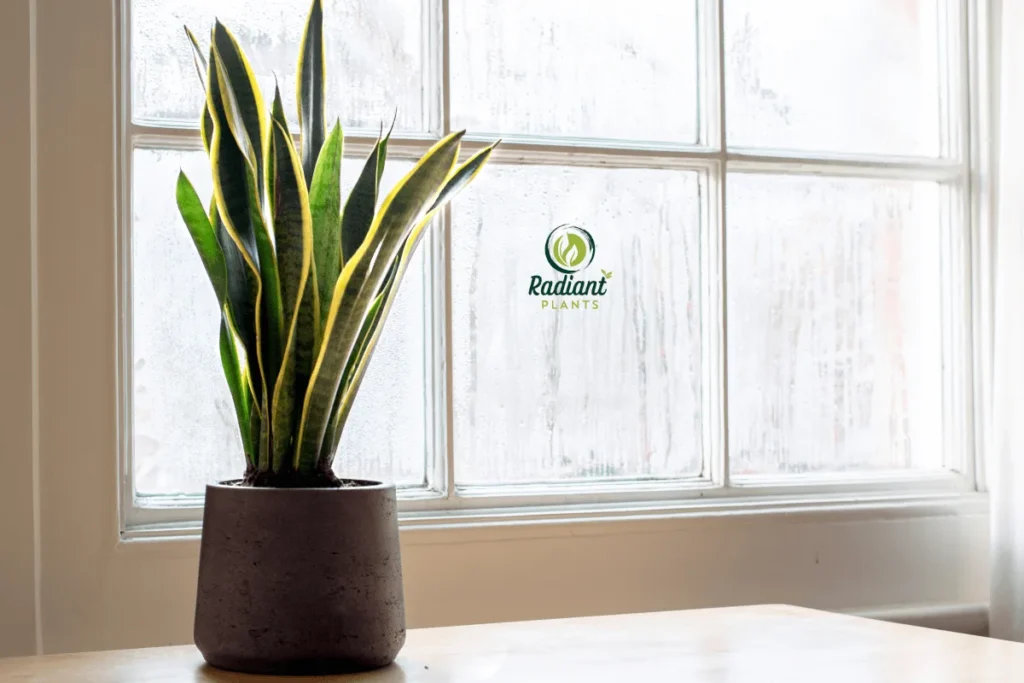
The snake plant stands out as the ultimate beginner-friendly ornamental plant. Its architectural, sword-like leaves create a modern aesthetic while requiring water only every 2-3 weeks. This plant thrives in low light conditions and releases oxygen at night, making it perfect for bedrooms.
Care Requirements:
- Light: Bright indirect to low light
- Water: Every 2-3 weeks when the soil is dry
- Soil: Well-draining cactus mix
- Temperature: 60-80°F (15-27°C)
Peace Lily (Spathiphyllum)
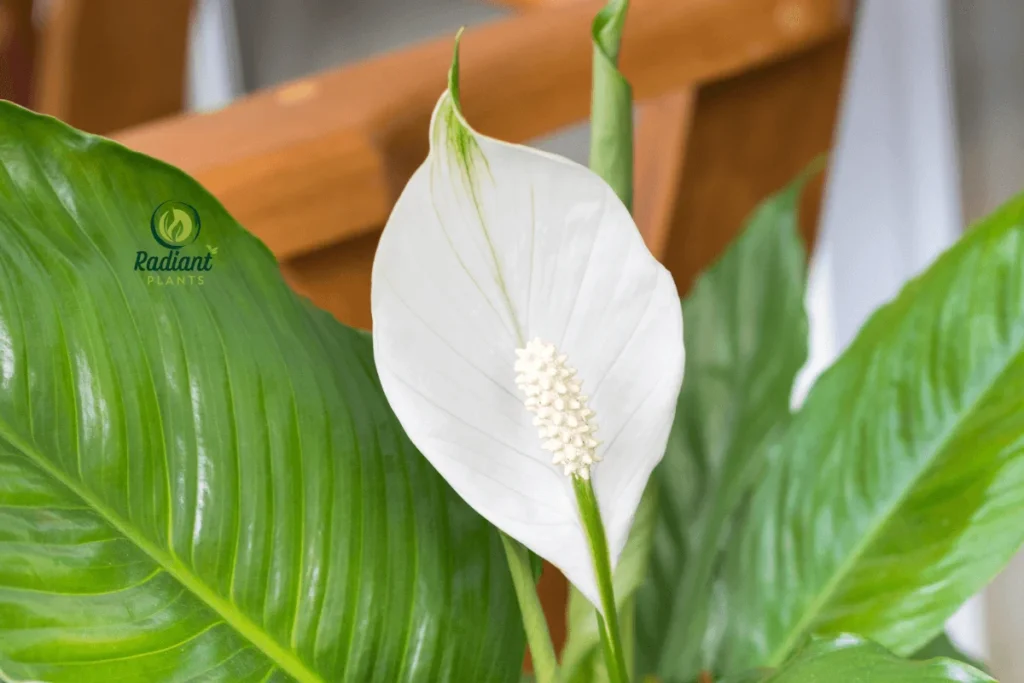
Known for its elegant white blooms and glossy green foliage, the peace lily is a forgiving plant that actually tells you when it needs water by drooping its leaves. It’s one of the top air-purifying plants and thrives in low to medium light conditions.
Care Requirements:
- Light: Low to medium indirect light
- Water: When the soil surface feels dry
- Soil: Regular potting mix
- Temperature: 65-75°F (18-24°C)
ZZ Plant (Zamioculcas zamiifolia)
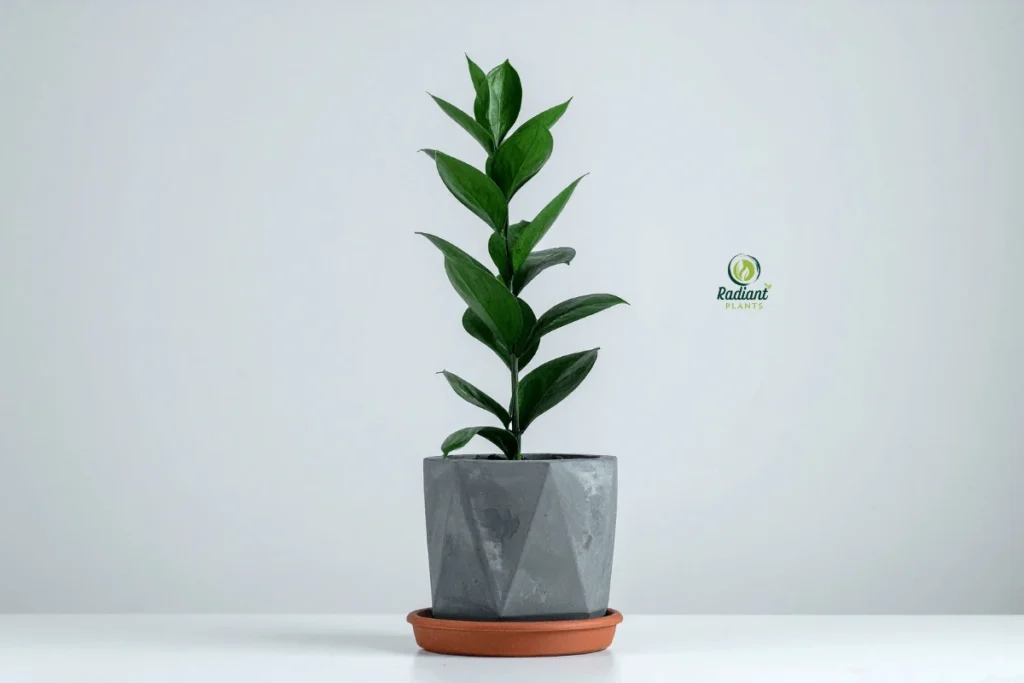
The ZZ plant’s waxy, dark green leaves create a sophisticated look while tolerating neglect better than most houseplants. It can survive in fluorescent office lighting and requires water only when the soil is completely dry.
Care Requirements:
- Light: Low to bright indirect light
- Water: Every 3-4 weeks
- Soil: Well-draining potting mix
- Temperature: 60-75°F (15-24°C)
Dramatic Statement Plants for Experienced Gardeners
For those ready to make bold design choices, these show-stopping ornamental plants create focal points and conversation starters in any space.
Bird of Paradise (Strelitzia reginae)
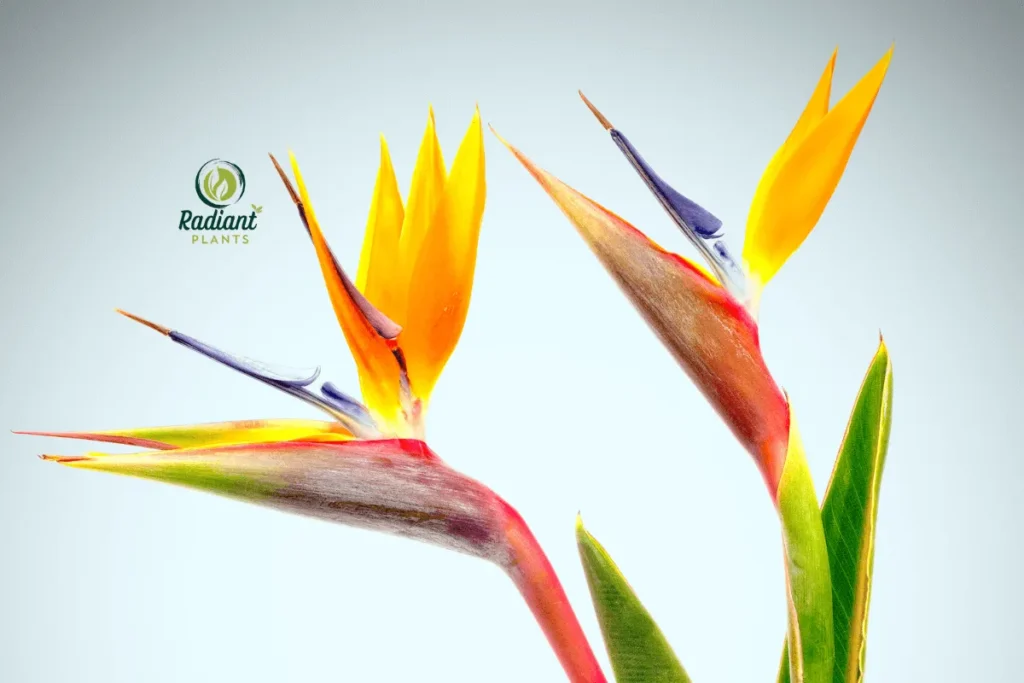
This tropical beauty transforms any room into an exotic paradise with its large, banana-like leaves and stunning orange and blue flowers. While it requires more attention than beginner plants, the dramatic impact makes it worth the effort.
Advanced Care Tips:
- Rotate weekly for even growth
- Mist leaves regularly to increase humidity
- Use filtered water to prevent brown leaf tips
- Fertilize monthly during the growing season
- Prune damaged leaves at the base
Japanese Maple (Acer palmatum)
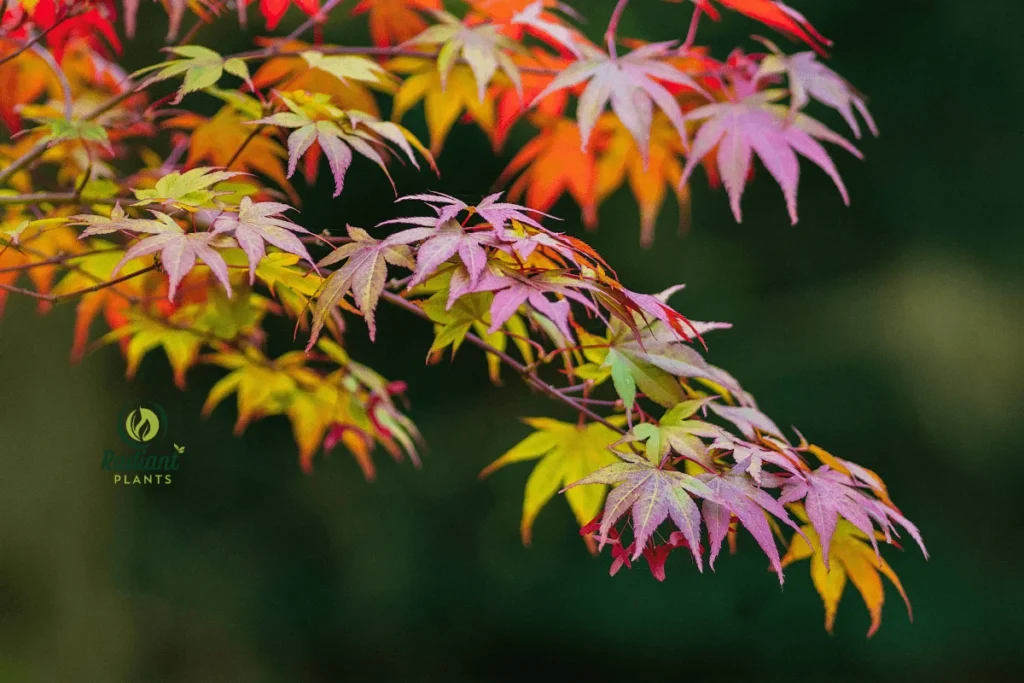
A garden showstopper that provides year-round interest with its delicate, lacy foliage that changes color dramatically through the seasons. From bright green spring growth to fiery autumn displays, this tree creates a living sculpture in your landscape.
Seasonal Care Schedule:
- Spring: Apply balanced fertilizer, prune if needed
- Summer: Deepwater weekly, mulch around the base
- Fall: Enjoy color change, reduce watering
- Winter: Protect from harsh winds, minimal watering
Fiddle Leaf Fig (Ficus lyrata)
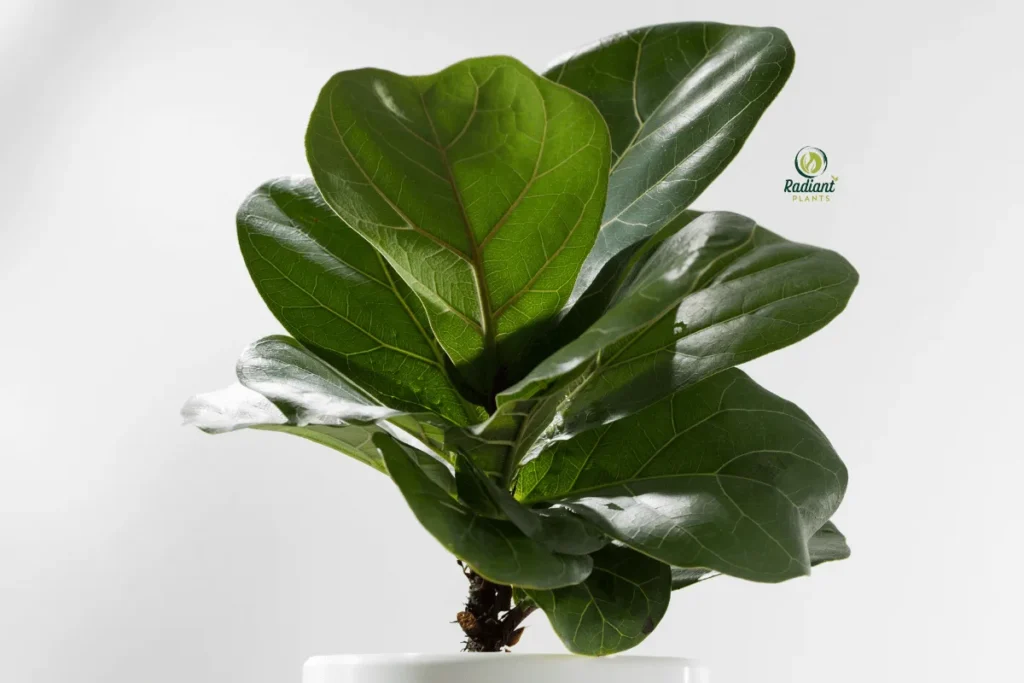
The Instagram-famous fiddle leaf fig creates an instant designer look with its large, violin-shaped leaves. While it requires specific care, its ability to grow into a stunning floor-to-ceiling specimen makes it a favorite among plant enthusiasts.
Success Strategies:
- Place in bright, indirect light near a window
- Water when the top inch of soil is dry
- Clean leaves weekly with a damp cloth
- Rotate 1/4 turn weekly for even growth
- Avoid moving once established
10 Great Ornamental Flowering Trees
Ornamental Plants by Growing Conditions
Match your plants to your environment for guaranteed success, whether you’re dealing with low light, high humidity, or challenging outdoor conditions.
Low Light Champions
Many homes have areas with limited natural light, but these ornamental plants thrive in such conditions:
Indoor Options:
- Chinese Evergreen: Colorful foliage patterns
- Pothos: Trailing vines perfect for hanging baskets
- Cast Iron Plant: Nearly indestructible
- Philodendron: Heart-shaped leaves
Outdoor Shade Options:
- Hostas: Textured foliage in various sizes
- Ferns: Delicate, feathery fronds
- Caladiums: Colorful, heart-shaped leaves
- Astilbe: Feathery flower plumes
High Humidity Lovers
Perfect for bathrooms, kitchens, or naturally humid climates:
Plant | Humidity Level | Special Features |
|---|---|---|
Boston Fern | 40-50% | Air purifying, cascading fronds |
Orchids | 50-60% | Elegant blooms, long-lasting flowers |
Air Plants | 50-60% | No soil needed, unique forms |
Prayer Plant | 40-50% | Leaves fold at night |
Drought-Tolerant Options
Perfect for busy lifestyles or water-conscious gardening:
Succulents:
- Jade Plant: Tree-like growth, pink flowers
- Echeveria: Rosette shapes, colorful varieties
- Aloe Vera: Medicinal properties, spiky leaves
- Sedum: Ground cover, star-shaped flowers
Outdoor Xerophytes:
- Lavender: Fragrant purple flowers
- Rosemary: Culinary herb, needle-like foliage
- Sage: Silvery leaves, colorful flower spikes
- Ornamental Grasses: Movement and texture
Seasonal Ornamental Plant Care Guide
Master the art of year-round plant care with this comprehensive seasonal schedule that ensures your ornamental plants thrive in every season.
Spring Care (March-May)
Spring marks the beginning of the active growing season for most ornamental plants. This is the time for repotting, fertilizing, and preparing plants for their peak growing period.
Essential Spring Tasks:
- Repot root-bound plants with fresh soil
- Begin a regular fertilizing schedule
- Increase watering frequency as plants wake up
- Start pest monitoring as insects become active
- Prune winter damage and shape plants
- Move outdoor plants to their summer locations
Summer Care (June-August)
Summer brings peak growth but also potential stress from heat and increased light. Proper watering and protection become crucial during this period.
Summer Maintenance:
- Water deeply but less frequently
- Provide afternoon shade for sensitive plants
- Increase humidity around tropical plants
- Deadhead flowering plants regularly
- Watch for heat stress signs (wilting, leaf drop)
- Maintain a consistent fertilizing schedule
Fall Care (September-November)
Fall preparation sets the stage for winter survival and next year’s growth. This is the time to gradually reduce care intensity and prepare plants for dormancy.
Fall Preparation:
- Reduce watering frequency gradually
- Stop fertilizing in late fall
- Bring outdoor plants indoors before the frost
- Clean up fallen leaves and debris
- Apply mulch around outdoor plants
- Take cuttings for winter propagation
Winter Care (December-February)
Winter is a time of rest for most ornamental plants. Reduced light and cooler temperatures mean adjusted care routines and patience as plants enter dormancy.
Winter Maintenance:
- Reduce watering significantly
- Avoid fertilizing dormant plants
- Provide supplemental light if needed
- Maintain consistent temperatures
- Monitor for pests in warm indoor conditions
- Plan next year’s garden additions
Common Mistakes to Avoid
Learn from these common mistakes in ornamental plant care to ensure your green friends thrive from the start.
Watering Mistakes
- Overwatering: The number one plant killer—always check soil moisture first
- Inconsistent watering: Develop a routine rather than watering randomly
- Wrong water type: Use room temperature, filtered water when possible
- Watering leaves: Focus on soil, not foliage, to prevent fungal issues
- Ignoring drainage: Ensure all pots have drainage holes
Light and Location Errors
- Sudden location changes: Acclimate plants gradually to new light conditions
- Ignoring light requirements: Match plants to available light levels
- Forgetting to rotate: Turn plants weekly for even growth
- Placing near heat sources: Avoid radiators, heating vents, and direct heat
- Overcrowding: Give plants space to grow and breathe
Fertilizing Blunders
- Fertilizing dormant plants: Stop feeding in winter months
- Over-fertilizing: More is not better—follow package instructions
- Wrong fertilizer type: Use balanced formulas for most houseplants
- Fertilizing dry soil: Always water before fertilizing
- Ignoring pH needs: Some plants require specific soil pH levels
Advanced Tips for Plant Enthusiasts
Take your ornamental plant game to the next level with these expert strategies for maximizing plant health and aesthetic impact.
Propagation Techniques
Expand your plant collection for free by mastering these propagation methods:
Water Propagation:
- Cut 4-6-inch stems below a node
- Place in clear water, change every 3-4 days
- Wait for 2-inch roots before transplanting
- Best for: Pothos, Philodendron, Coleus
Soil Propagation:
- Dip cuttings in rooting hormone
- Plant in moist, well-draining soil
- Keep the soil consistently moist
- Best for: Rubber trees, Ficus, Dracaena
Division Method:
- Carefully separate root systems
- Ensure each division has roots and shoots
- Plant immediately in the appropriate soil
- Best for: Snake plants, Peace lilies, Ferns
Creating Plant Compositions
Design stunning plant arrangements that look professionally curated:
Height Variation:
- Use plants of different heights for visual interest
- Place tall plants in the back, and shorter ones in the front
- Create pyramid shapes with odd numbers of plants
Color Coordination:
- Group plants with complementary foliage colors
- Use flowering plants as accent pieces
- Consider container colors in your overall scheme
Texture Contrast:
- Mix broad leaves with fine, delicate foliage
- Combine glossy and matte leaf surfaces
- Add plants with different growth habits
Troubleshooting Common Issues
Yellow Leaves:
- Usually indicates overwatering or poor drainage
- Check soil moisture and adjust the watering schedule
- Ensure proper drainage in all containers
Brown Leaf Tips:
- Often caused by low humidity or fluoride in water
- Increase humidity with pebble trays or humidifiers
- Use filtered or distilled water
Leggy Growth:
- Indicates insufficient light
- Move the plant to a brighter location gradually
- Prune back leggy stems to encourage bushy growth
Pest Problems:
- Inspect plants regularly for early detection
- Isolate-infested plants immediately
- Use neem oil or insecticidal soap for treatment
Best Ornamental Plants for Different Rooms
Optimize your plant selection by choosing varieties that thrive in specific indoor environments and serve functional purposes.
Living Room Statement Plants
Transform your living room into a green oasis with these impressive ornamental plants:
Monstera Deliciosa: Creates a dramatic impact with its split leaves and can grow up to 8 feet tall indoors. Its natural fenestrations (holes) develop as the plant matures, creating a living artwork.
Rubber Tree (Ficus elastica): Features glossy, dark green leaves that reflect light beautifully. Available in traditional green or burgundy varieties, it can be pruned to maintain the desired height.
Dracaena Marginata: Adds architectural interest with its spiky, colorful leaves on slender stems. Perfect for corners or as a room divider.
Bedroom Air Purifiers
Choose plants that improve air quality while you sleep:
Snake Plant: Releases oxygen at night, unlike most plants that release CO2. Its vertical growth pattern fits perfectly in bedroom corners.
Aloe Vera: Provides both air purification and practical benefits—break off leaves to soothe minor burns or skin irritations.
Lavender: While challenging indoors, successfully grown lavender provides natural aromatherapy for better sleep quality.
Kitchen Herb Gardens
Combine beauty with functionality by growing edible ornamental plants:
Plant | Culinary Uses | Care Level | Special Features |
|---|---|---|---|
Rosemary | Soups, meats, and vegetables | Easy | Drought tolerant, piney fragrance |
Basil | Pasta, salads, pesto | Medium | Pinch flowers to encourage growth |
Thyme | Teas, desserts, and cocktails | Easy | Cascading growth, tiny flowers |
Mint | Teas, desserts, cocktails | Easy | Aggressive spreader, keep contained |
Bathroom Humidity Lovers
Take advantage of naturally humid bathroom conditions:
Boston Fern: Thrives in bathroom humidity and adds soft, romantic texture. Hang in baskets or place on plant stands.
Orchids: Many varieties love bathroom conditions. Phalaenopsis orchids are particularly forgiving and bloom for months.
Air Plants (Tillandsia): Require no soil and absorb moisture from the air. Perfect for modern bathroom aesthetics.
Outdoor Ornamental Plant Landscaping
Create stunning outdoor spaces with ornamental plants that provide year-round interest and support local ecosystems.
Foundation Planting Design
Create beautiful transitions from your home to the landscape:
Layered Approach:
- Tall backdrop: Japanese Maple, Ornamental Cherry
- Medium layer: Hydrangeas, Azaleas, Rhododendrons
- Ground level: Hostas, Ferns, Seasonal flowers
Color Schemes:
- Monochromatic: Various shades of green with white flowers
- Complementary: Purple and yellow combinations
- Seasonal: Spring bulbs, summer annuals, fall color
Pollinator-Friendly Gardens
Support local wildlife while creating beautiful landscapes:
Native Plant Selection:
- Choose plants native to your region
- Provide blooms throughout the growing season
- Include plants with different flower shapes for various pollinators
Bee-Friendly Options:
- Lavender: Long blooming, drought-tolerant
- Salvia: Tubular flowers, available in many colors
- Echinacea: Daisy-like blooms, seed heads feed birds
- Bee Balm: Colorful, fragrant, attracts butterflies
Seasonal Interest Planning
Design for year-round beauty:
Spring: Bulbs, flowering trees, emerging perennials Summer: Continuous bloomers, colorful foliage, water features Fall: Changing leaf colors, ornamental grasses, late bloomers Winter: Evergreen structure, interesting bark, persistent berries
Plant Care Tools and Supplies
Equip yourself with the right tools to make ornamental plant care easier and more effective.
Essential Tools
Watering Equipment:
- Watering can with long spout: Precise watering without disturbing the soil
- Moisture meter: Takes the guesswork out of watering schedules
- Spray bottle: For misting humidity-loving plants
- Self-watering containers: For consistent moisture levels
Maintenance Tools:
- Pruning shears: Clean cuts prevent disease
- Soft cloth: For cleaning leaves and removing dust
- Small rake: For loosening the soil surface
- Plant ties: To support growing plants
Soil and Fertilizer Options
Potting Mix Types:
- All-purpose: Good for most houseplants
- Cactus mix: Well-draining for succulents
- African violet mix: Slightly acidic for specific plants
- Seed starting mix: Fine texture for propagation
Fertilizer Choices:
- Balanced liquid (20-20-20): General feeding for most plants
- Slow-release granules: Steady nutrition over months
- Organic options: Compost, worm castings, fish emulsion
- Specialized formulas: For specific plant types or growth phases
Frequently Asked Questions
What are the easiest ornamental plants for complete beginners?
Start with snake plants, pothos, or ZZ plants. These virtually indestructible options tolerate neglect and various light conditions while still providing beautiful foliage. They’re perfect for building confidence before moving to more challenging plants.
How often should I water my ornamental plants?
Most ornamental plants need water when the top inch of soil feels dry. This typically means watering every 7-10 days, but it varies based on plant type, season, humidity, and container size. Always check soil moisture rather than following a rigid schedule.
Can ornamental plants improve indoor air quality?
Yes! NASA research confirms that plants like snake plants, peace lilies, and spider plants remove harmful chemicals like formaldehyde and benzene from indoor air. While you’d need many plants for significant air purification, even a few can make a measurable difference.
Which ornamental plants are safe for pets?
Pet-safe options include spider plants, Boston ferns, prayer plants, and most succulents (except jade plants). Always research specific plants before bringing them home, as many common ornamental plants can be toxic to cats and dogs.
How do I know if my ornamental plant needs repotting?
Look for roots growing out of drainage holes, water running straight through the pot, or extremely slow growth. Most plants need repotting every 2-3 years, but fast-growing plants may need annual repotting.
Conclusion
Ornamental plants offer an incredible opportunity to transform your living spaces while improving your health and well-being. From the beginner-friendly snake plant to the dramatic bird of paradise, there’s a perfect plant for every space, skill level, and aesthetic preference.
Success with ornamental plants comes down to understanding their basic needs and matching plants to your environment. Start with easy-care options to build confidence, then gradually expand your collection as you gain experience. Remember that every plant expert started as a beginner and even experienced gardeners continue learning.
The benefits of ornamental plants extend far beyond their visual appeal. They clean your air, reduce stress, increase humidity, and create a stronger connection to nature in our increasingly digital world. Whether you’re creating a peaceful bedroom retreat with air-purifying plants or designing a stunning outdoor garden that supports local wildlife, ornamental plants offer endless possibilities for enhancing your life.
Ready to start your ornamental plant journey? Begin with one or two plants that match your current lifestyle and growing conditions. As you gain confidence and experience, you’ll discover the joy of watching your green friends thrive and multiply. Your future self will thank you for taking this step toward a more beautiful, healthy, and connected way of living.
Share your ornamental plant successes in the comments below, and don’t forget to explore our other plant care guides for more expert tips and inspiration!

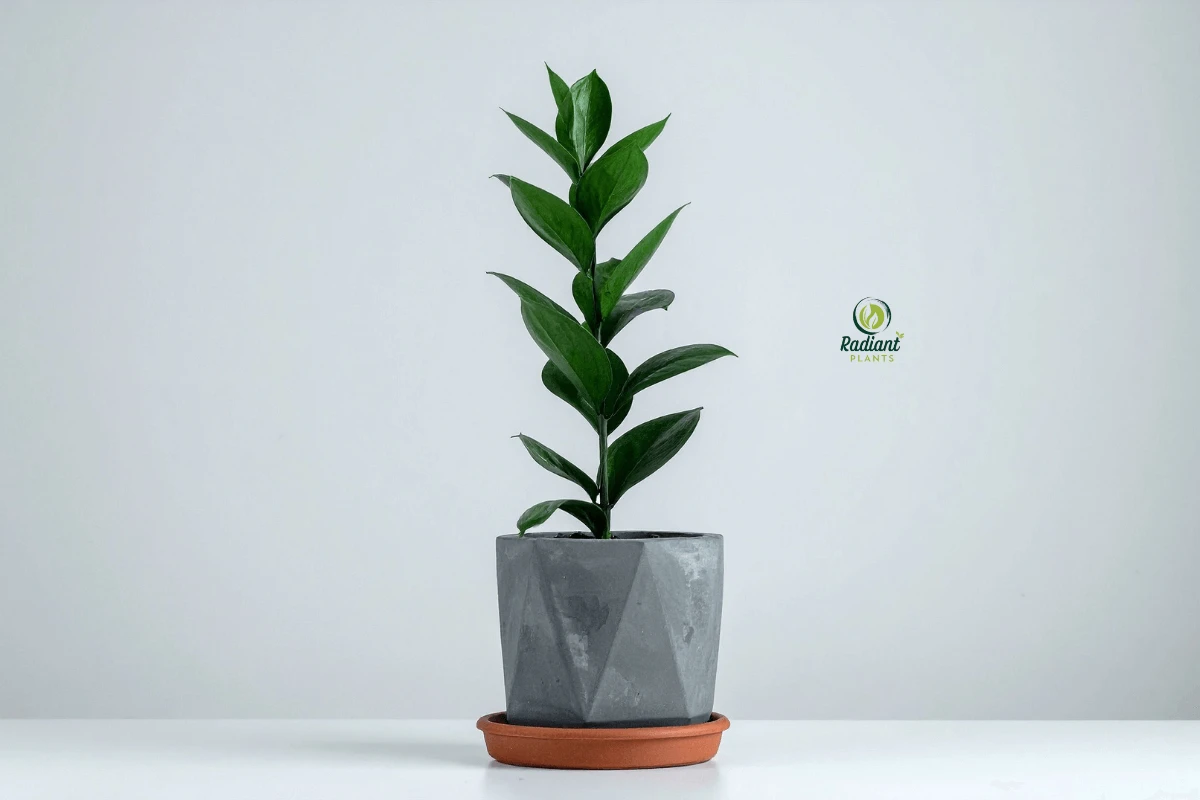
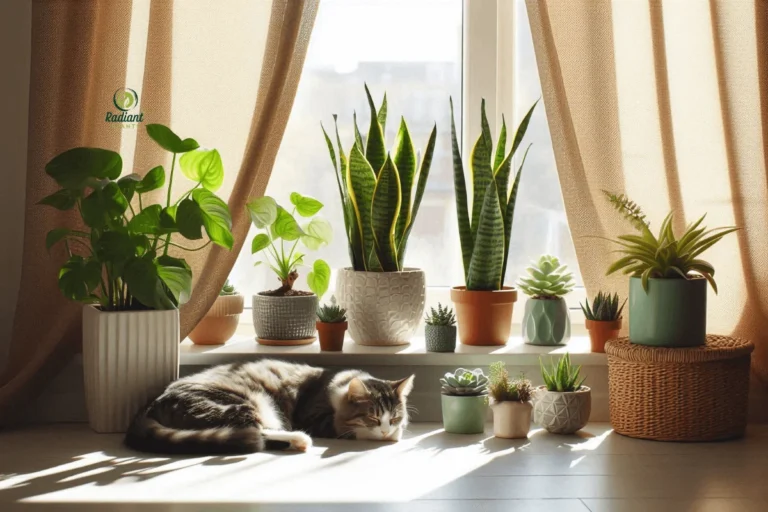
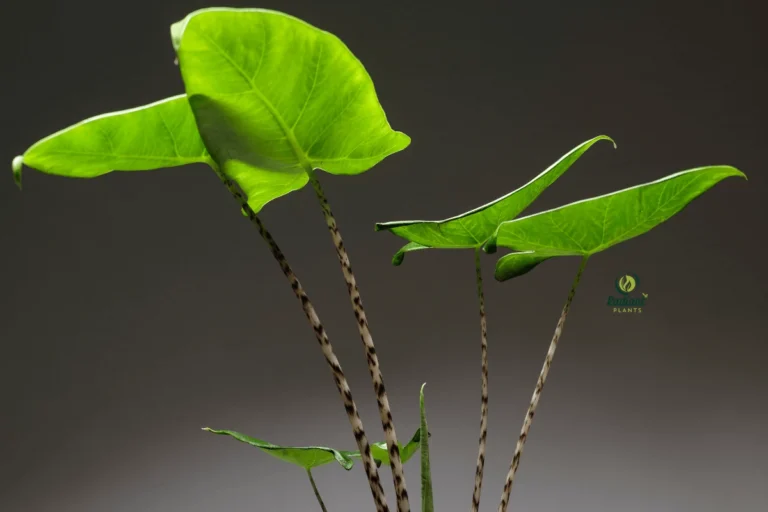
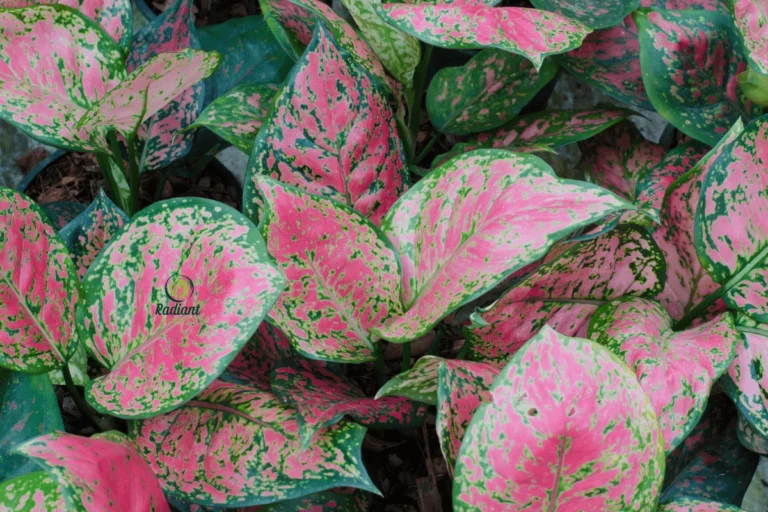
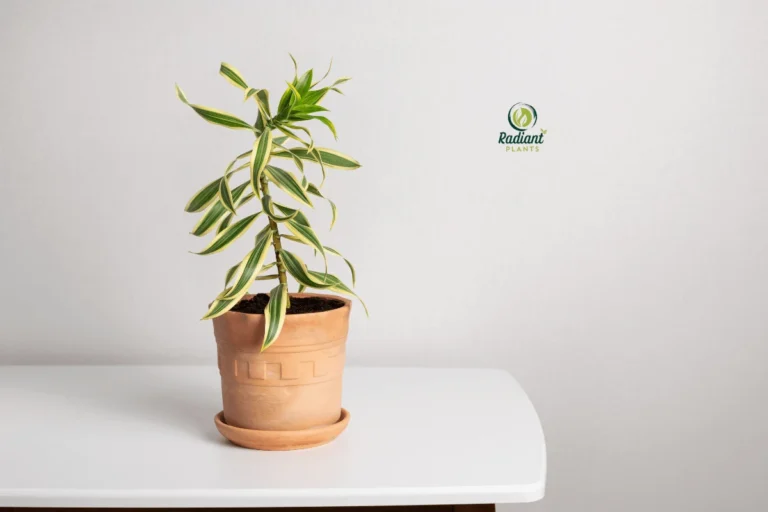
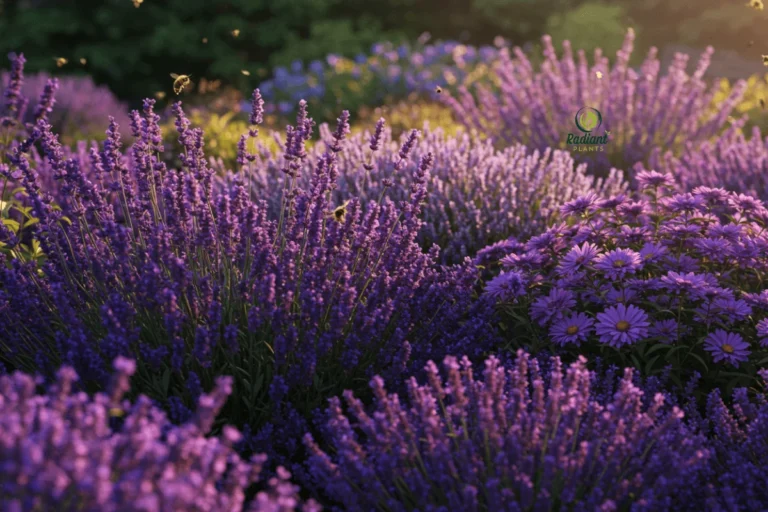
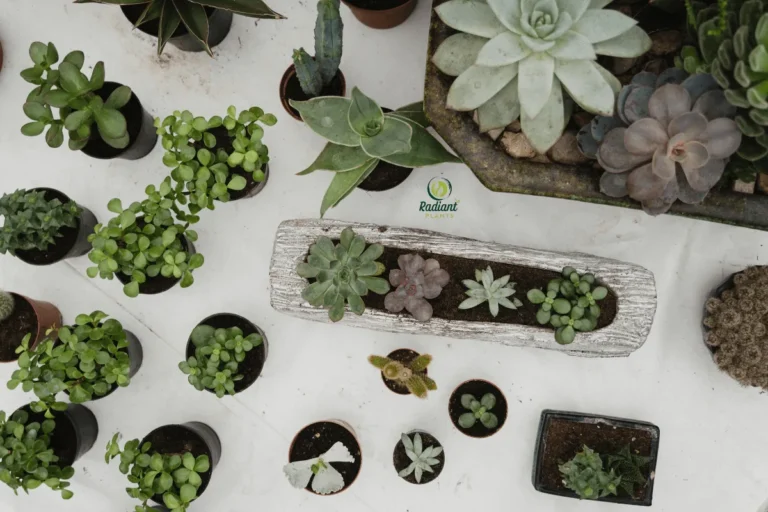
2 Comments
Comments are closed.